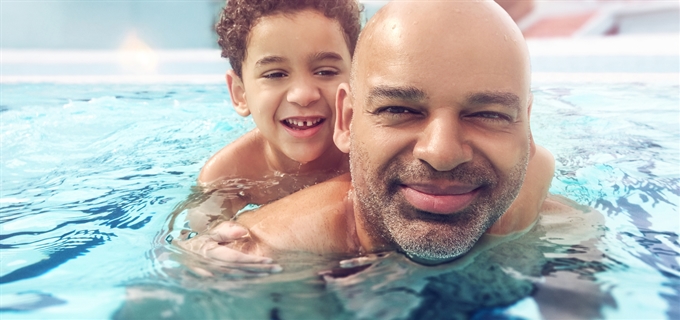Search for a doctor or hospital in your network.


Search for a doctor or hospital in your network.

Get News & Updates Directly To Your Inbox
 For many people, summer is the best time of the year. It’s filled with long days spent outside crammed full of fun activities.
For many people, summer is the best time of the year. It’s filled with long days spent outside crammed full of fun activities.But summer brings its own challenges when it comes to keeping your family healthy. Nothing puts the brakes on a good summer day like a bad sunburn. The summer heat itself can be life threatening, and water can be an enticing danger for kids.
Put plans in place to protect your family as they enjoy all summer has to offer.
Exposure to excessive heat can cause some illnesses and make existing health issues, like heart and respiratory diseases, worse.
Heat-related illness can cause hyperthermia. Hyperthermia happens when the body is not able to cool itself the right way because of high heat. Since the body can’t let go of heat quickly enough, it causes a rapid rise in body temperature.
Heat-linked illnesses are preventable. Yet more than 600 Americans are killed by high heat each year.
Heat exhaustion and heat stroke are the most serious heat-related illnesses.
Heat Exhaustion
Pay attention to the warnings of heat exhaustion:
What to Do
Go to an air-conditioned place and lie down. Loosen or remove clothing. Take a cool bath. Take sips of cool sports drinks. Get medical help if symptoms get worse or last more than an hour.
Heat Stroke
Signs of heat stroke include:
What to Do
If you see symptoms of heat stroke, call 911 or get the person to a hospital right away. Quick treatment of heat-related illnesses is vital. Aggressive fluid replacement and cooling of core body temperature is critical to preventing death. Cool down with any methods on hand until you can get medical help.
Prevention
If the weather forecast includes high heat:
And even if it isn’t very hot outside, never leave children or pets in a car. Heatstroke in children can happen in a car when the outside temperature is as low as 57 degrees.
Protect your skin from the summer sun. Wear sunscreen every day, no matter how long you plan to be outside. Use a sunscreen with SPF 15 or higher. Choose a broad-spectrum sunscreen that will protect against UVB and UVA radiation. If you are fair skinned or plan to be outdoors all day, opt for an SPF of 30 or higher.
You can also protect yourself by:
Drowning is a serious problem. About 11 people die every day in the U.S. from accidental drowning. And drowning is a leading cause of death for children.
Take these steps to help protect yourself and your family:
It’s especially important to look out for children around water, even the bathtub. Take these steps to help protect kids:
Blue Cross and Blue Shield of Texas, a Division of Health Care Service Corporation,
a Mutual Legal Reserve Company, an Independent Licensee of the Blue Cross and Blue Shield Association
© Copyright 2026 Health Care Service Corporation. All Rights Reserved.
Verint is an operating division of Verint Americas, Inc., an independent company that provides and hosts an online community platform for blogging and access to social media for Blue Cross and Blue Shield of Texas.
![]() File is in portable document format (PDF). To view this file, you may need to install a PDF reader program. Most PDF readers are a free download. One option is Adobe® Reader® which has a built-in screen reader. Other Adobe accessibility tools and information can be downloaded at https://www.adobe.com/trust/accessibility.html.
File is in portable document format (PDF). To view this file, you may need to install a PDF reader program. Most PDF readers are a free download. One option is Adobe® Reader® which has a built-in screen reader. Other Adobe accessibility tools and information can be downloaded at https://www.adobe.com/trust/accessibility.html. ![]()
![]() You are leaving this website/app ("site"). This new site may be offered by a vendor or an independent third party. The site may also contain non-Medicare related information. Some sites may require you to agree to their terms of use and privacy policy.
You are leaving this website/app ("site"). This new site may be offered by a vendor or an independent third party. The site may also contain non-Medicare related information. Some sites may require you to agree to their terms of use and privacy policy.
Powered by Verint